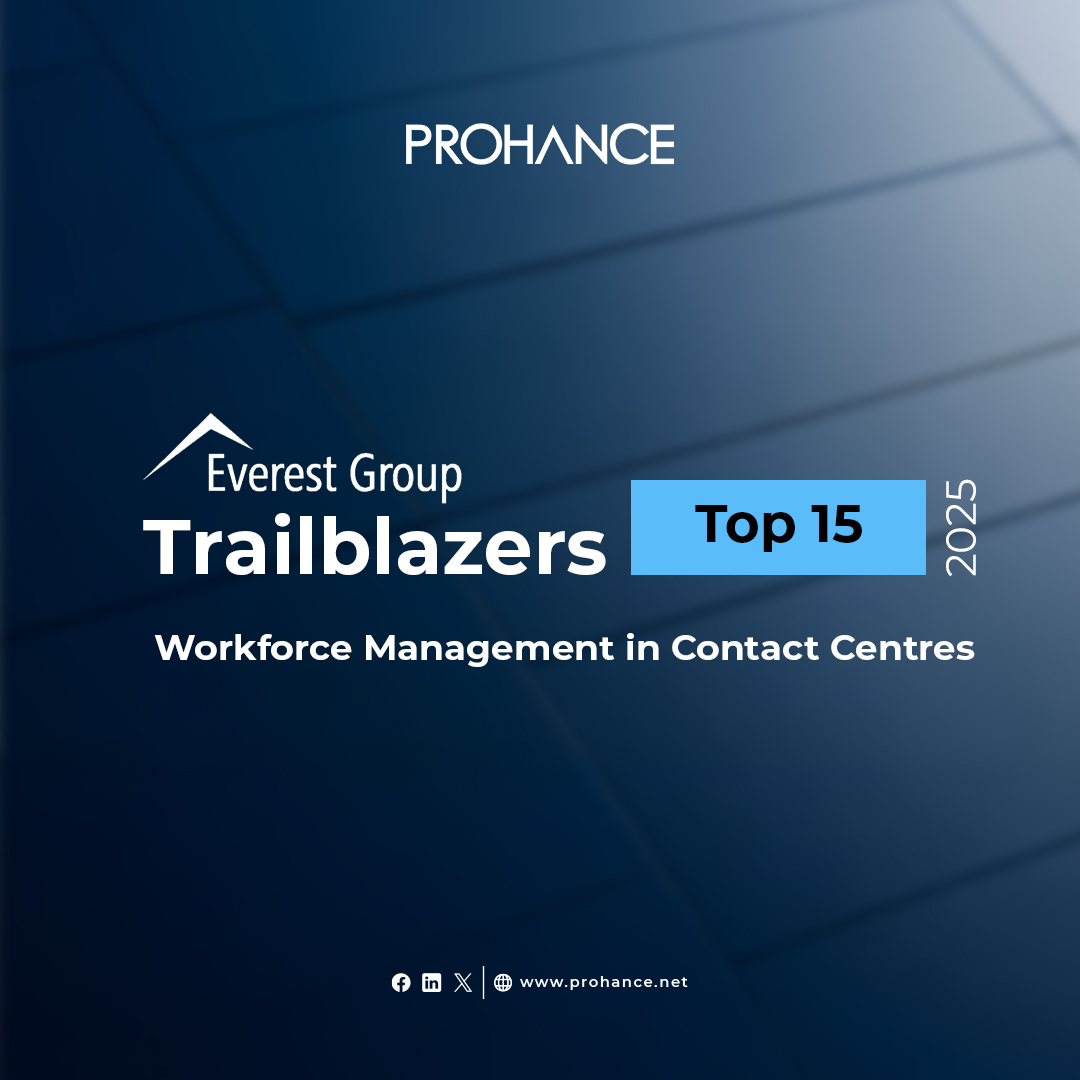Understanding Attrition in BPO – A Must-Read for HR and Operations Managers
Table of Contents
All organizations face the challenges of frontline employee attrition, but none as much as BPOs. While the average employee attrition rate in BPOs can vary from organization to organization, overall, BPOs tend to experience higher attrition rates when compared to other sectors. According to McKinsey, annual contact center attrition can be up to a whopping 60%.
To calculate the attrition rate in their organization, managers and team leaders can use the following attrition formula:
Attrition Rate = (Number of Employees Who Left During a Specific Period / Total Number of Employees at the Beginning of the Period) x 100
What could be the reason for high attrition in the BPO sector, and can leaders take any steps to manage it? One of the primary drivers for faster turnover rates at BPOs is the demanding nature of the work and the high levels of stress that it creates.
In this article, we’ll explore the many reasons why BPO employees leave their jobs. We will also cover the types of attrition in a BPO, the impact of attrition, and strategies managers can employ to retain their employees while boosting employee satisfaction.
Let’s look at the different types of attrition in BPOs and the reasons behind them.
Types and Causes of Attrition in the BPO
You might believe that all employee attrition is the same. However, there are different types of attrition in BPOs, such as:
Voluntary Attrition: When an employee leaves the company on their own for any personal and/or professional reason.
Involuntary Attrition: This is when a company terminates an employee or conducts layoffs. Performance, misconduct, workforce optimization, and economic factors usually play a part in this.
Early Attrition: Sometimes an employee might leave the BPO right after being hired or they don’t turn up for work on their first day. They are also called ghosters.
Late Attrition: This indicates an employee leaving the company after an extended period, and it could be after several months or many years.
Demographic Attrition: When a specific demographic or group, such as newly-hired agents in a specific age group or role, leaves unexpectedly at a higher-than-normal rate.
Skill-based Attrition: An employee might want to leave because they wish to acquire new skills. Employees could also leave if they feel their current skills are not utilized or they lack any scope for development within their current role.
Now that we’ve identified the types of attrition, let’s look at what causes employees at a BPO to leave their jobs.
The Root Causes of Attrition
Before you formulate strategies to reduce attrition, you must understand why your employees are leaving in the first place. Here are the top reasons for employee attrition in BPOs:
Job Stress and Burnout
Working at a BPO is intensely demanding. Employees often spend long hours at work, manage high call volumes, and have to deal with difficult customers. When combined, these factors are largely responsible for burnout and job dissatisfaction.
Low Compensation
Despite the high demands of the job, salaries in the BPO industry are not on par with the rest of the sectors. This leaves employees feeling underappreciated and underpaid for their efforts, resulting in them seeking better-paying opportunities.
Fewer Career Opportunities
A career in BPOs presents limited growth opportunities. There is not much progression and employees feel stuck. The desire to better their career pushes them to look for other jobs.
Poor Work-Life Balance
The BPO industry does not follow traditional working hours. Night shifts, especially, can take a toll on personal lives. Seeing their peers in other industries makes BPO employees seek jobs that offer a better work-life balance.
While these are the reasons that the sector can’t help, there are multiple personal reasons for voluntary attrition. First-day ghosters have usually accepted another offer with probably better compensation, scheduling, or commute. Sometimes employees experience job shock – where the role doesn’t align with the description – there is a lack of feedback, poor training and coaching, bad culture, or a bad onboarding experience.
Whatever the reasons, the consequences of attrition for a BPO are severe and can impact productivity, resource planning, expenses, and more. Let’s look at the outcomes a little closer.
Consequences of Attrition in BPO
More Recruitment Costs
It is always more expensive to hire a new employee than it is to retain them. The costs to replace each agent can vary depending on factors such as time spent at the BPO, role, and geography.
Knowledge and Skill Gap
Any departing employee, especially employees who have been in the company for a long time, takes away their knowledge about the company with them. Loss of knowledge about products, services, systems, processes, customer preferences, and other skill sets can cost the BPO.
Increased Training Time
With each turnover, there is a need to train and coach new agents. While this is a critical component of the job, when the company finds itself constantly training and coaching new agents, it can negatively impact other employees and business priorities. This is especially true in smaller BPOs and those with tight resources.
Decline in Service
While the new agents are learning the ropes of the job, there is a gap in service and a drop in the overall quality of service. You will notice more errors, extended hold times, ineffective issue resolution, dissatisfied customers, etc.
Damaged Relationships and Reputation
A culmination of all these issues is poor customer experience, likely leading to lost business and brand damage.
Client Churn
Eventually, clients will be unhappy and could take their business to a competitor.
Attrition is a serious issue that can cripple an organization, especially a smaller BPO. Is your organization challenged by attrition? Read on to know more about how you can deal with it.
Proven Strategies to Reduce Attrition in BPOs
While you might not be able to entirely control the causes of attrition, there are ways to prevent it. Let’s look at how to control attrition in BPO:
- Be Clear About the Role
- Personalize Preboarding
- Invest in Training
- Encourage Learning
- Help the Coaches
- Provide Timely Feedback
- Provide Opportunities for Growth
- Gamification Works
- Don’t Forget the Human Angle
Be Clear About the Role
Prevent job shock by ensuring there is no ambiguity around the job description and its expectations.
Personalize Preboarding
New hires tend to disappear right between the offer and the first day of joining. To get around this ‘danger zone’, introduce the new hires to the team and company. Invite them to engaging microlearning modules, and gift them company-branded gifts, like t-shirts, mugs, etc.
Invest in Training
Training is a great way to ensure retention. Focus on targeted microlearning with its ‘snackable’ bites of information and training. This assists in reinforcing knowledge and fighting the forgetting curve. Leverage AI for targeted learning that can plug performance gaps.
Encourage Learning
Besides offering training, create a culture of learning that encourages participation in ancillary activities. This helps understand how the organization functions as a whole and also creates a sense of community.
Help the Coaches
High attrition in a BPO can impact a supervisor’s productivity. Turn to solutions that can simplify their tasks and streamline their admin work. Some solutions can also help recognize and prioritize whom to coach.
Provide Timely Feedback
Agents who do not receive feedback, positive or negative, will look for other opportunities. Real-time performance insights help agents and supervisors identify gaps and determine ways to scale output.
Provide Opportunities for Growth
Employees today are looking for something more than just monetary compensation. An organization that offers them a clear learning and career path is preferred over one that only sees them as an employee.
Gamification Works
Gamifying the work experience can help employees feel motivated and engaged. Apply game mechanics to your operations – leaderboards, badges, points, etc. – and tie them to goals such as KPIs, sales, and other key metrics. This will improve performance and reduce attrition.
Don’t Forget the Human Angle
BPO work is demanding, and customer expectations are rising. The result is burnout. Taking a more empathetic approach to your employees can build better agent-supervisor relationships and lead to happier, productive, and retained employees.
Concluding Thoughts
To manage employee attrition in BPOs, it is important to address the root causes of turnover. It is only by understanding why employees leave BPOs can companies come up with strategies to retain them. Meanwhile, it is important not to lose focus and continue to promote employee engagement, taking a keen interest in their well-being and professional growth.






